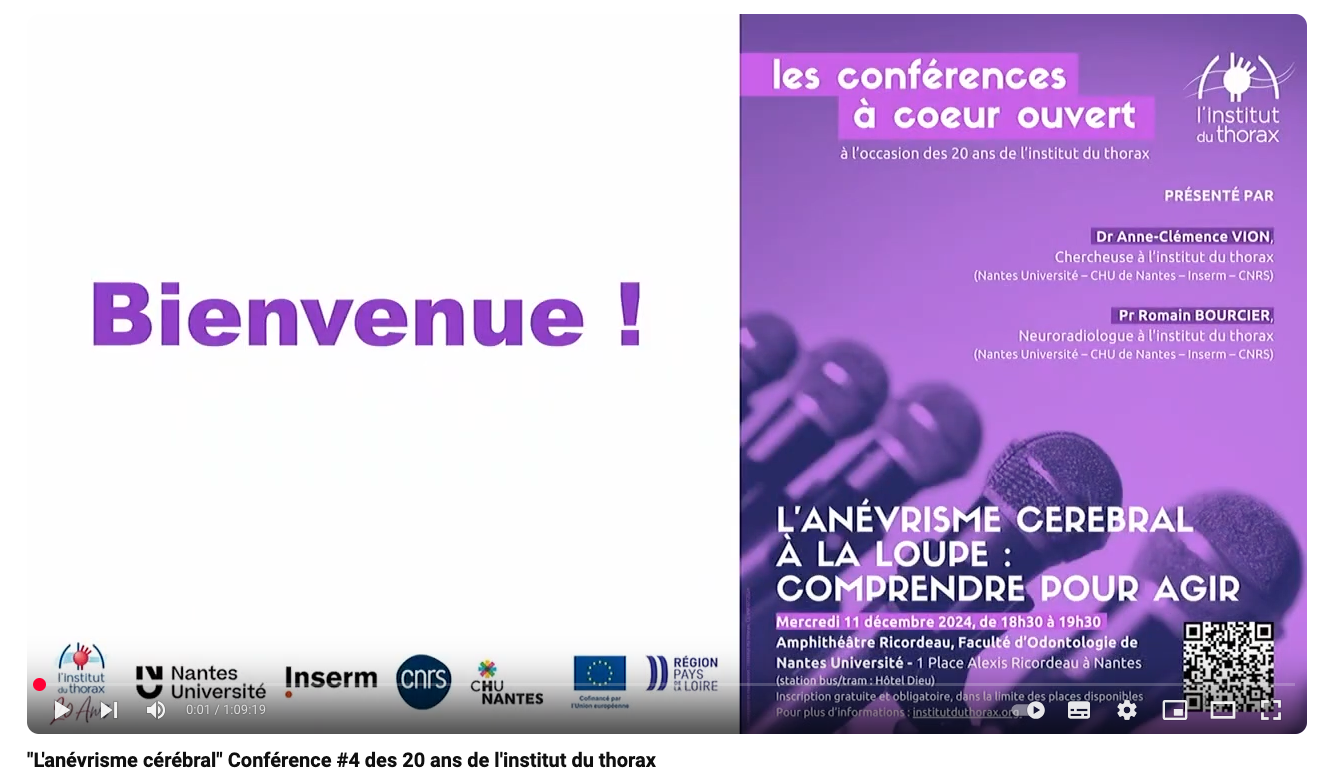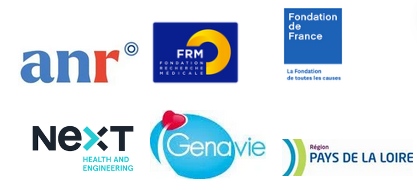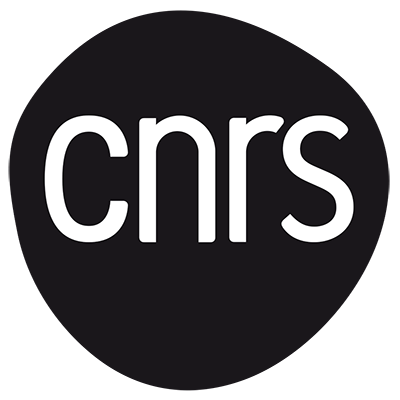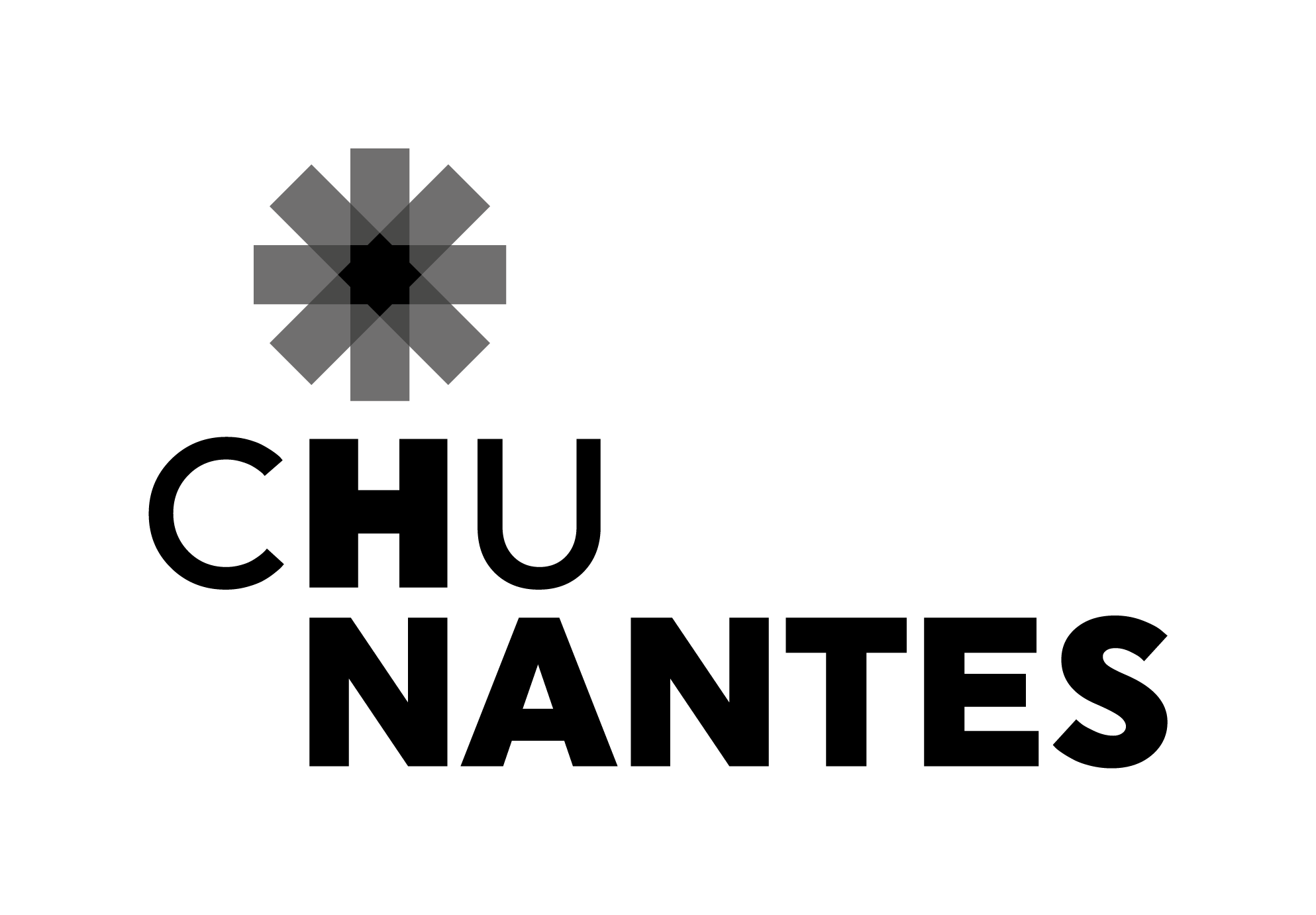Pathophysiology of intracranial aneurysm
Gervaise Loirand & Anne-Clémence Vion
Investigators : Gervaise Loirand, Anne-Clémence Vion
PhD students : Ibtissam Babahnini, Maxence Bodet, Mary-Adel Mrad
Support staff : Corentin Lebot, Céline Menguy
This program is divided in two axes:
- Genetic variants and pathophysiology of IA (Gervaise Loirand)
Intracranial aneurysm (IA) is an asymptomatic cerebrovascular abnormality affecting 3.2% of the general population. Familial history of IA and hypertension predisposes to IA formation and rupture. Although the pathogenesis of IA has been the subject of many studies for the last decade, the mechanisms underlying formation, growth and rupture of IA are still mostly unknown and relevant animal models of IA are not available. We hypothesize that the functional analysis of the causal/susceptibility variants identified by whole exome-sequencing in familial forms of IA by Team I (J.-J. Shott) will provide clues to understanding the pathological mechanisms of IA formation, and the bases for developing diagnostic and therapeutic tools. We have already identified such a rare coding variant in the angiopoietin-like 6 gene (ANGPTL6) (Bourcier, Am J Hum Genet, 2018). We have generated a mouse model carrying this variant that we are now analyzing. We have set up relevant in vivo, ex vivo and in vitro approaches including micro-computed tomography, histology and immunohistology, pressure myography … to identify the abnormalities and defects in cerebral arteries induced by the ANGPTL6 variant and understand why it promotes IA. Other genetic variants identified in other IA families will be analyzed in the same way.
- Mecanosensitivity and IA formation (Anne Clémence Vion)
IA corresponds to a localized dilation caused by weakness in the wall of a cerebral artery. It is generally described as a rounded outgrowth that preferentially arises at the bifurcations of the circle of Willis, where endothelial and smooth muscle cells are exposed to extreme variation of mechanical stimuli (very high shear-stress and stretching). A defective repponse/adaptation of these arterial cells to local hemodynamic stresses is thus considered as a key step in the initiation of IA. To properly respond to hemodynamic forces, vascular cells transform a mechanical stimulus in a chemical signal. The actin cytoskeleton, mainly controlled by the Rho family of small G-proteins, is a key structure of the mechanosensing system. We hypothesize that Rho protein signaling is involved in the maladaptive response of intracerebral arteries to hemodynamic forces and the consequent IA formation. The goals of this project are thus to identify the Rho exchange factors regulated by hemodynamic forces in endothelial and smooth muscle cells and to assess their physiological role and their implication in the development of IAs. This work will provide new insights into the molecular mechanisms leading to IA formation, with the prospect of discovering potential therapeutic targets with preventive and curative potentials.
Learn more about our projects
- ANR MICRO : Anne Clémence Vion (2022 - 2025)
- Région Pays de la Loire "Etoile Montante" : Anne Clémence Vion (2025 - 2027)
- Fondation pour la Recherche Médicale : Gervaise Loirand (2022 - 2026)
- ANR COCA : Gervaise Loirand (2023 - 2026)
- Fondation de France : Gervaise Loirand (2024 - 2026)
> Listen to AC Vion's interview _ Radio Canal Académie (Institut de France) _30/09/2019
> Watch AC Vion's pitch on O'Tablo #10 : Mechanical forces in intracranial aneurysm : the role of Rho proteins_ 03/02/2020
Designed by Anne-Clémence Vion, and drawn with Surya Batta, Milène Freneau, Céline Menguy and Clara-Lynn Schubert, this scientific creation tells with pictures and colors how mechanical forces contribute to intracranial aneurysm formation and questions about the potential role of the Rho protein in this effect.
> Watch Conference on Intracranial Aneurysms by Clémence Vion and Romain Bourcier _ 11/12/2024

C. Baron-Menguy, M. Freneau, M.-A. Mrad, C. Lebot, M. Rio, V. L’allinec, T. Quillard, H. Desal, R. Redon, R. Bourcier, A.-C. Vion, G. Loirand.
bioRxiv [Preprint] 2025.
Vessel bifurcation geometry remodeling in Do Novo and growing intracranial aneurysm. A multicenter study.
Boucherit J, Kerleroux B, Boulouis G, Tessier G, Rodriguez-Régent C, Sporns P, Ghannouch H, Shotar E, Gariel F, Marnat G, Burle J, Ifergan H, Forestier G, Rouchaud A, Desal H, Nouri A, Autrusseau F, Loirand G, Bourcier R, L'Allinec V.
J NeuroInterv Surg. 2023
Rare coding variants in CTSO, a potential new actor of arterial remodeling, are associated to familial intracranial aneurysm.
Freneau M, Blanchet R, Benichi S, Mrad MA, Batta SR, Rio M, Bonnaud S, LindenbaumP, Laporte F, Cuenot S, Deleuze JF, Dina C, Chatel S, Bourcereau E, Jouan S, ICAN Study Group, Desal H, Vion AC, Bourcier R, Loirand G*, Redon R*.
MedRxiv, 2023
Batta SPR, Rio M, Lebot C, Baron-Menguy C, Le Ruz R, Loirand G, Vion AC.
bioRxiv 2022;2022.09.10.507283.doi:10.1101/2022.09.10.507283.
Why Are Women Predisposed to Intracranial Aneurysm?
Milène Fréneau, Céline Baron-Menguy, Anne-Clémence Vion and Gervaise Loirand*
Front. Cardiovasc. Med. 2022
Bourcier R, Le Scouarnec S, Bonnaud S, Karakachoff M, Bourcereau E, Heurtebise-Chrétien S, Menguy C, Dina C, Simonet F, Moles A, Lenoble C, Lindenbaum P, Chatel S, Isidor B, Génin E, Deleuze J-F, Schott J-J, Le Marec H, ICAN Study Group, Loirand* G, Desal* H, Redon* R.
Am J Hum Genet. 2018.
Funding
- Agence Nationale de la Recherche
- Fondation pour la Recherche Médicale
- Fondation de France
- Région Pays de la Loire
- NEXT
- Genavie






